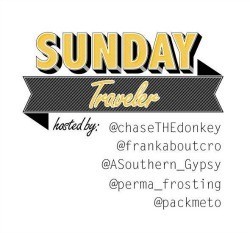If These Walls Could Talk – A Black Cab Tour in Belfast
As the black cab pulled up to our apartment in Andersontown and we clambered into the back seat, we still didn’t know what to expect. Must do. Can’t miss. The quintessential Belfast experience. These were the descriptions we had been given time and time again since we had arrived in Belfast. Even the surly customs officer at the airport had recommended the tour.
There’s something to be said about walking – or in this case driving – in the steps of history. While exploring the glass-encased treasures of a museum can be both enjoyable and informative, there is something that resonates deep within you after actually being there. Whether walking through the “tunnel of hope” in Sarajevo, alongside graffiti covered portions of the crumbling Berlin Wall, or encircling the gigantic megaliths of Stonehenge, there is a special kind of magic that comes from witnessing a site face to face.
To really grasp Belfast’s turbulent history, there is no better way than to jump headfirst into the neighbourhoods and back alleys central to the conflict, while riding along comfortable in the backseat of a traditional Black Cab.
Playing a critical role in transporting civilians during The Troubles, the Black Cabs were the only way for people to navigate the barricades and road blocks that were commonplace throughout the city. If a road was blocked the cabs used side streets. They drove over the rubble results of riots, avoided army checkpoints, and along footpaths, in an effort to deliver people up and down the Falls Road, to Andersontown, and Whiterock. The cabs were frequently crammed with up to 8 people at a time, six in the back and two up front, strangers forced together by the common need to get around the city.
The cab drivers got people to work and allowed people to visit their families – they were an essential service in an unimaginable time. This importance, however, also led them to being one of the prime targets of gunmen and hitsquads. In all, 8 drivers lost their lives, while many more were injured, arrested, or harassed on an almost daily basis. Today, these same cabs transport people around some of the once dangerous regions of the city to see the murals and monuments that commemorate the Troubles.
After climbing into our own personal Black Cab, our guide Tom introduced us to the Belfast of 30 years ago – a war zone of sectarian and political violence, frequent bombings, and innocent civilians caught in the crossfire – a far cry from today’s vibrant city. As we wove through small side streets lined with red brick row-houses, Tom regaled us with stories that both amazed and horrified us. Stories of being dragged out of his home as a teenager in the middle of the night to be questioned for days, stories of being searched 5, 6, 7 times a day, stories or carbombs and fistfights with army officers – it was hard to imagine any of this happening in the present day city we were witnessing.
The real stars of the show on a black cab tour, however, are the murals. Painted to commemorate events or persons involved in the history of the region, particularly during the Troubles, the murals also show the remaining divide between republican and loyalist groups in Northern Ireland. With many of the enormous murals honoring members of the hit-squads and commemorating the killing of innocent civilians, we struggled to understand how they can even be allowed to remain in a city trying desperately to recover from the horrific events of decades prior.

The man depicted in this mural was murdered during the conflict, his widow still lives in the house on the far left

A mural to Stevie “TopGun” McKeag – Commander for the Ulster Defense Association and responsible for at least 9 known murders of rival IRA members and innocent Catholic civilians
While the decision to keep or remove the murals is the centre of much bureaucratic debate, the paintings are an integral part of exploring Belfast’s history and help shed light on the deep riff that evolved between the people of Northern Ireland. Further evidence of the ground Northern Ireland still has to make up in becoming whole again are the 99 barriers known as “peace walls” that separate Protestant and Catholic neighbourhoods in the city. The walls (and gated roadways), which combine to cover 34 kilometers and reach 7.5 meters at their tallest points, will only come down when the communities they surround agree they should be removed, a consensus the people of Northern Ireland are not yet ready to reach in most cases.
While Belfast is steeped in a rich and turbulent history, the city of today is vibrant, modern, and growing. The city is also a wonderful destination for travelers looking for something different in the British Isles, offering intrepid travelers the chance to see the city before it becomes the focus of every travel guide and must-see list. 

- We were able to sign the wall and opted to keep it simple with just our first names
Logistics: We used Paddy Campbell’s Belfast Famous Black Cab Tours for our excursion through Belfast and couldn’t have been happier. However for those who can’t prebook, tours can be arranged at the taxi stall across from the City Hall. Alternatively, if a ride in a traditional cab is all you’re looking for, Black Cabs can be hailed along the Falls Road, just tap the window when you want to get out and then pay the driver through the front side window.





